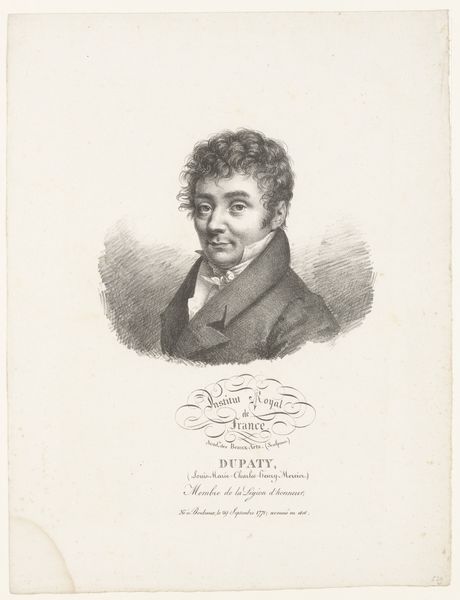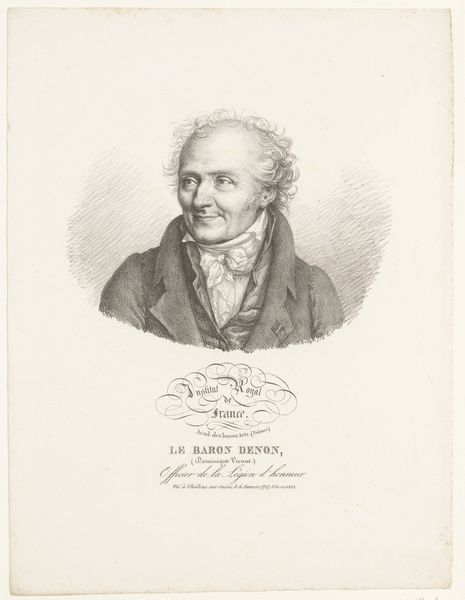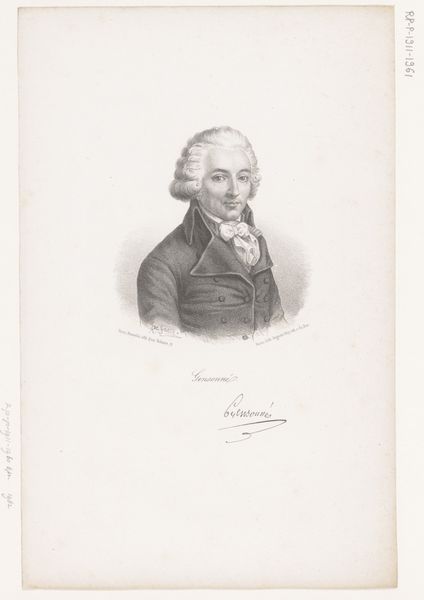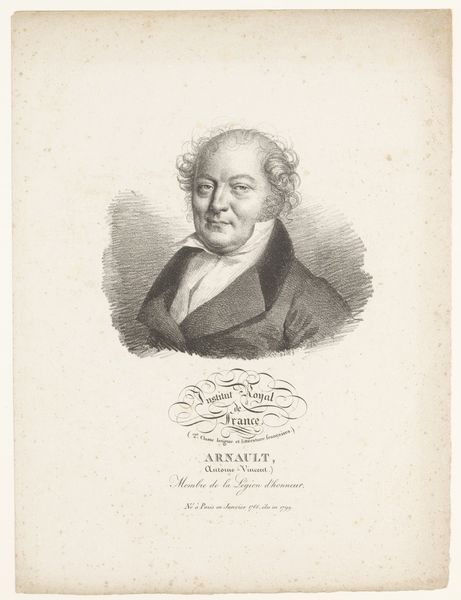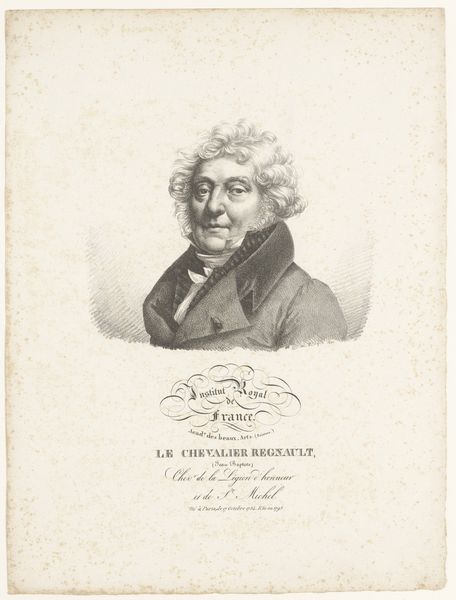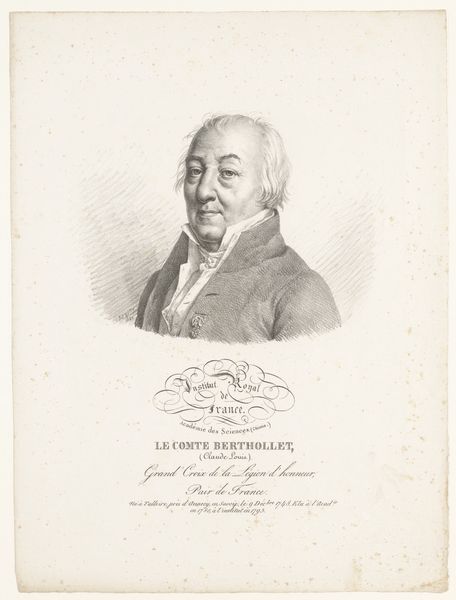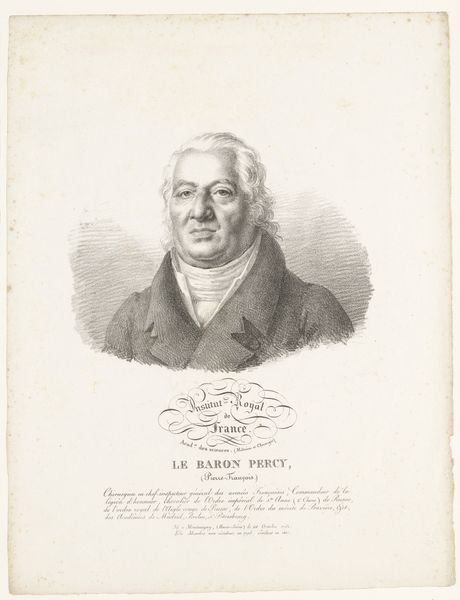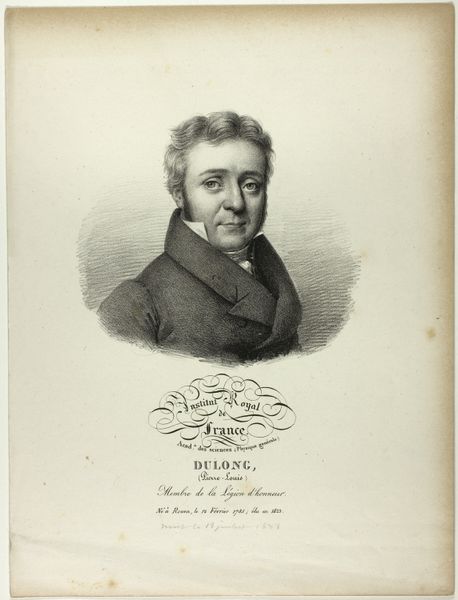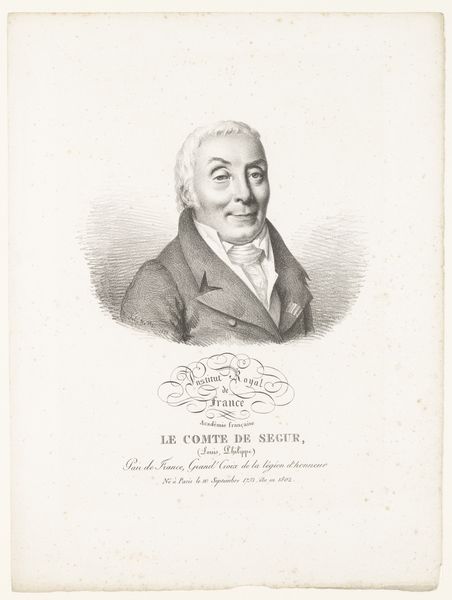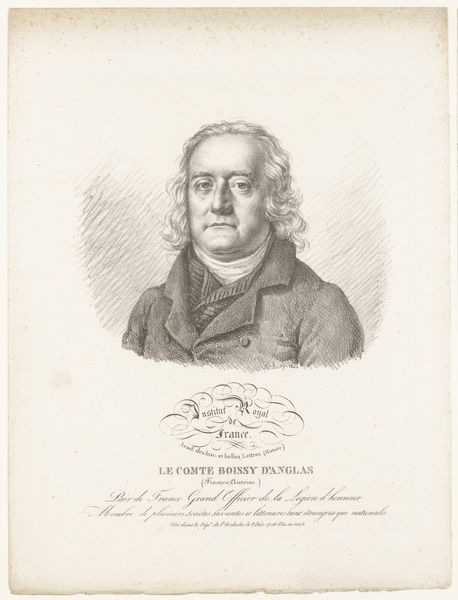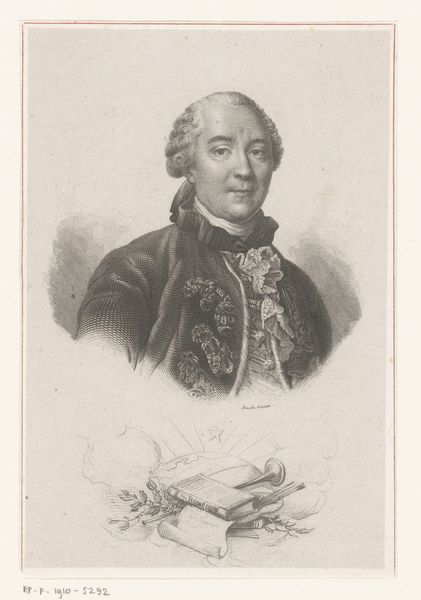
Portret van graaf Nicolas François de Neufchâteau, graaf van Neufchâteau 1820
0:00
0:00
drawing, pen
#
portrait
#
drawing
#
neoclacissism
#
old engraving style
#
pencil drawing
#
pen
#
portrait drawing
Dimensions: height 328 mm, width 251 mm
Copyright: Rijks Museum: Open Domain
Curator: We’re looking at a portrait of Count Nicolas François de Neufchâteau, created around 1820 by Julien-Léopold Boilly. It seems to be executed with pen and pencil, resulting in what looks like a detailed drawing or maybe even an old engraving. What strikes you initially? Editor: Well, there’s something almost unsettling about the gaze. It feels both distant and intensely focused at the same time. The shading and fine linework give him a weight that seems to sit at odds with the paper material. Curator: Precisely. Boilly was working within the Neoclassical style, known for its order and return to classical antiquity. Think about what that stylistic choice aimed to convey about individuals and their roles in post-Revolutionary French society. It’s no coincidence that it takes inspiration from Greek and Roman art because it conveys stability and seriousness. Editor: It is interesting you point to stability. The way Neufchâteau is rendered using Neoclassical elements seems almost to legitimize or sanitize his image after tumultuous political changes. Do you agree, that it served to recast powerful figures under a more palatable aesthetic banner? Curator: That’s a brilliant observation. Neufchâteau was a key figure during a period of immense social and political change in France. He was involved in pretty much everything from the French Revolution to the Napoleonic era. So commissioning his portrait was a declaration about a renewed socio-political order. Editor: I find myself questioning how successful such sanitized representations can be, because they feel inherently tied to power dynamics. There's always the tension between the desire for control over an image and the messy reality of individual lives, power struggles, and ongoing historical debates. What impact do you think the choice of drawing instead of painting may have had in its initial reception? Curator: Drawing makes this image appear more "scientific" or "objective," something more associated with historical or anatomical illustration, making it distinct from the royal paintings displayed previously at the Louvre. So Boilly creates not a monument but a sort of ‘rational’ declaration of civic presence. Editor: The portrait definitely encourages a more democratic approach to portraying authority. Seeing Boilly's Neufchâteau helps highlight art's involvement in shaping perceptions and its ties to constructing and reinforcing societal ideas. It is a reminder of power's complexity within artistic portrayal. Curator: Indeed. Thinking about the drawing within this period’s historical context provides profound insight into the dynamic relations between power, identity, and artistic representation. Editor: Absolutely, engaging with Boilly's piece forces us to question both the surface and the deeper currents that formed the narrative of identity back in France at that time, along with its continued impacts today.
Comments
No comments
Be the first to comment and join the conversation on the ultimate creative platform.



